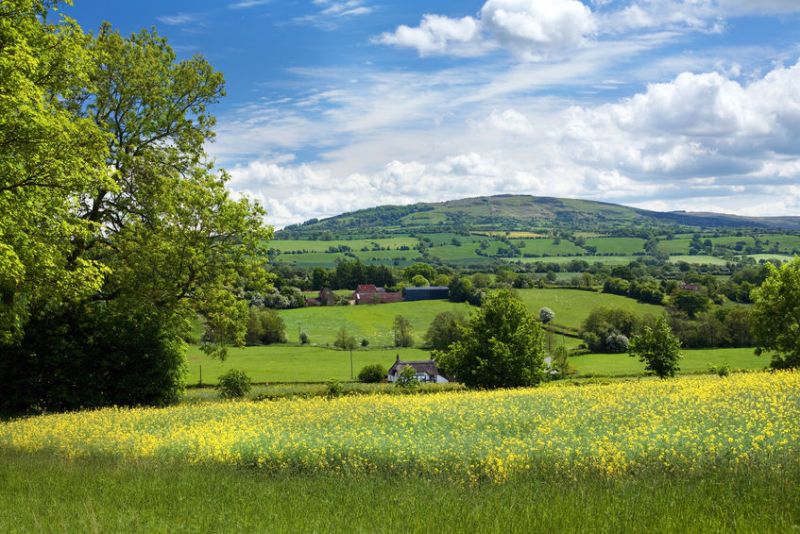
The value of agricultural land in England and Wales fell by two per cent over the last 12 months, according to new figures.
Data from estate agents Knight Frank shows the market is holding up well given the uncertainty of Brexit.
Knight Frank's rural research team has produced its latest farmland index, covering the second quarter of 2018.
It shows that the average value of bare agricultural land in England and Wales dipped by 0.7 per cent in the period from April to June this year.
The research indicates that values have fallen by two per cent overall over the past 12 months.
But the author of the report, Andrew Shirley, describes this as a “robust performance given that agriculture could be one of the sectors potentially affected most by Brexit.”
Mr Shirley, who is head of rural research at the company, explains: “Values in most markets are holding up remarkably well given the impending change.”
“Rural property markets across Britain remain in wait-and-see mode as Brexit and political uncertainty dampen activity.”
But he states that a lack of supply and continued demand from buyers driven by motivations other than agricultural returns is helping to support the market.
“A fall of just two per cent overall over the past 12 months means land is still worth on average £7,175 an acre,” he adds.
Scottish farmland
In Scotland, the average value of farmland has actually increased by one per cent over past 12 months.
“Across the board, prices rose marginally to £4,285 an acre at the end of June 2018. However, there were slight variations depending on land type,” Mr Shirley says.
“Good arable land and hill land remain the strongest performers with values for each rising by around two per cent to £9,347 an ace and £724 an acre, respectively.
“A continued dearth of land and farms for sale, exacerbated by the cold snap in late spring, is the main reason agricultural land values are remaining firm, although buyers are still extremely cautious.
“However, the Stability and Simplicity consultation published on Scottish agriculture post-Brexit has been given a cautious welcome by the industry.
“Unlike Defra’s Health and Harmony paper, it has food and farming at its heart, rather than extra greening measures,” he adds.
‘Wait and see’
Ian Bailey, director of rural research at Savills, says that sales data for the first six months of the year indicates that the proportion of farmers selling has reduced.
“There are a few factors that could be at play here including the adoption of a ‘wait and see’ position in the current political and agricultural policy climate and the weather, which delayed or prevented the marketing of some farms,” Mr Bailey says in his latest update.
“Debt is always a driver behind some sales but our data does not show any increase in the number of debt-related sales during the first half of this year, despite national agricultural debt levels at their highest since the late 1980s.
“However, the current drought and increasing interest rates may drive more debt related sales especially where the pressure to service borrowings is already high.
“We will be closely monitoring the supply side of the farmland market equation over the coming months,” says Mr Bailey.
‘Price rally’
Andrew Shirley says it would be wrong to read too much into the fall in values shown by his latest report.
“Just as I said last quarter – when prices rose slightly – that it would be wrong to say we were witnessing the beginning of a price rally, it would be equally premature to assume that this latest quarterly dip automatically presages a more significant downturn,” he says.
“As the Brexit saga continues we are in for an extended period of uncertainty.”
Mr Shirley says that several large farming estates, including the 2,177-acre Sutton Hall Estate near Woodbridge in Suffolk, have been launched on the market recently, but he says that, overall, there are "few signs that the lack of supply that is helping to support values is abating.
"However, according to our Farmland Index Survey, the lack of a willing successor is an increasing driver for the sale of farms.
“Brexit could exacerbate this trend, but it could also act as the motivation for entrepreneurial young farmers to reshape the UK’s agricultural sector. Debt as a reason to sell is also on the rise, although there is no widespread pressure from banks at the moment.
“Aside from the ongoing lack of supply, rollover relief is one of the key drivers of demand across the country, but particularly in areas seeing large amounts of development or infrastructure projects like HS2.
He adds: “This will remain a factor for some time, as demand continues to outstrip supply. Average values, meanwhile, will become increasingly disparate, even at a very local level, as almost every sale is now to a special purchaser.”
In a separate report on Scotland, he says: "A continued dearth of land and farms for sale, exacerbated by the cold snap in late spring, is the main reason agricultural land values are remaining firm. Ongoing uncertainty about the outcome of Brexit is making both vendors and potential buyers cautious.
“However, the stability and simplicity consultation on Scottish agriculture post-Brexit, published recently by Scotland’s Rural Economy Secretary Fergus Ewing has been given a cautious welcome by the industry.
“Unlike Defra’s health and harmony paper, it has food and farming at its heart, rather than extra greening measures.
He adds: “That said, there are still many unknowns. In particular, details of how farm support payments will be allocated among the devolved regions once the UK has left the EU and how much power the Scottish government will have over agricultural policy.”
Mr Shirley says it is a case of wait and see for rural property markets across Britain as a result of Brexit.
